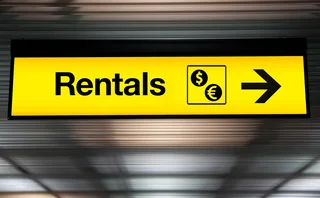
Asset managers hold the key to any FX revival
Almost a year ago, as we prepared to launch FX Markets, our focus for the first issue’s cover story was on the prolonged period of low volatility that had engulfed the foreign exchange industry. No matter what happened around the world, FX prices would simply shrug it off. As a result, FX vol kept grinding lower and lower.
It took a global pandemic for this trend to change. The spike in FX volatility during February and March was sudden and violent, but short-lived. Vol has calmed since then, though it remains above its earlier record lows.
The combination of higher FX vol, rock-bottom interest rates across G10 currencies and a cheaper US dollar has brought new life to foreign exchange. Investors are again turning to FX as an asset class to express macro views and lock in new opportunities.
After some fallow years for FX, says Record Currency Management’s global head of sales, Sally Francis-Cole, currencies are now back in vogue.
With developed market interest rates anchored to the floor by central banks, appetite for FX as a release valve is growing
With developed market interest rates anchored to the floor by central banks, appetite for FX as a release valve is growing, allowing traders to react to short-term moves in markets. Similarly, investing based on fundamentals in currency markets has made a comeback. On the other hand, more traditional strategies such as carry trades and momentum trading are being left behind.
But while trading activity in FX has returned on parts of the buy side, market participants say that if the trend is to become permanent, long-term asset managers that aren’t seeking to make a quick profit from fast-moving markets will need to get on board.
These users tend to use FX for hedging, not to take directional views. But that might change, especially with low interest rates killing off many carry trades. While some lack a mandate for shifting assets directly into foreign exchange, Amundi’s FX head, Andreas König, is hopeful that, after the past few quiet years, an opportunity exists for a “real move into normalisation and into attractiveness for FX as an asset class”.
Asset managers could influence things in other ways too. If the increased volatility leads them to shift their asset allocations to different currencies, for example, it will push up demand for FX to buy those assets, and also increase hedging flows.
If they decide to stay on the sidelines, however, the FX revival many have hoped for may turn out to be short-lived.
Only users who have a paid subscription or are part of a corporate subscription are able to print or copy content.
To access these options, along with all other subscription benefits, please contact info@fx-markets.com or view our subscription options here: https://subscriptions.fx-markets.com
You are currently unable to print this content. Please contact info@fx-markets.com to find out more.
You are currently unable to copy this content. Please contact info@fx-markets.com to find out more.
Copyright Infopro Digital Limited. All rights reserved.
As outlined in our terms and conditions, https://www.infopro-digital.com/terms-and-conditions/subscriptions/ (point 2.4), printing is limited to a single copy.
If you would like to purchase additional rights please email info@fx-markets.com
Copyright Infopro Digital Limited. All rights reserved.
You may share this content using our article tools. As outlined in our terms and conditions, https://www.infopro-digital.com/terms-and-conditions/subscriptions/ (clause 2.4), an Authorised User may only make one copy of the materials for their own personal use. You must also comply with the restrictions in clause 2.5.
If you would like to purchase additional rights please email info@fx-markets.com
More on Our take
Trump’s FX impact: a tale of two terms
Traders say Trump version 2.0 is already proving a much trickier task to manage than the original, and have had to adapt
Turn of the skew: FX options dealers balance fragile market
Calls-versus-puts demand flips wildly in response to geopolitical events
Banks seek to advance predictive pricing models
AI and machine learning-based tools could give FX desks the power to forecast currency movements
FX traders revel in March Madness
Chaotic Trump policies finally bring diversity to flows – to the delight of market-makers
Could LPs explore renting out their client franchise?
Connecting regional banks with sophisticated clients may see dealers evolve to become liquidity distribution hubs
Higher rates see corporates reassess FX structured products
Treasurers are getting a taste for dual currency notes and structured forwards
Quants dive into FX fixing windows debate
Longer fixing windows benefit clients, but predicting how dealers will respond is tough
Low FX vol regime fuels exotics expansion
Interest is growing in the products as a way to squeeze juice out of a flat market








